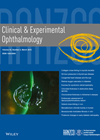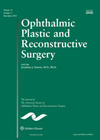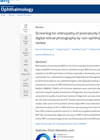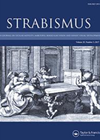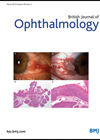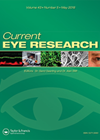Twenty-four hour IOP patterns in patients with thyroid eye disease (OO/GL)
Elevated IOP in patients with thyroid eye disease (TED) can be caused by restriction and compression of the globe by enlarged extraocular muscles, elevated episcleral venous pressure and increased mucopolysaccharide deposition in the trabecular meshwork. Although previous studies have investigated...
Conjunctival melanoma involving the lacrimal drainage system
A total of 52 patients were diagnosed with conjunctival melanoma over a period of 17 years, 17 of whom required orbital exenteration. Five of these were found to have melanoma involving the lacrimal drainage apparatus (LDA). One was evident clinically...
Botulinum toxin after orbicularis myectomy
This is a retrospective review of 27 patients with benign essential blepharospasm who had become resistant to treatment with botulinum toxin and had therefore undergone orbicularis myectomy of the upper lids. The study compares the dose and frequency of botulinum...
Screening for ROP using wide-angle digital retinal photography by non-ophthalmologists
This is a systematic review article to evaluate the accuracy of digital retinal photography (DRP) performed by trained personnel (non-ophthalmologists) in diagnosing clinically significant retinopathy of prematurity (ROP). The authors used search engines including Medline, EMBASE, CINAHL and Cochrane databases....
Dyslexic reading improved by vergence training
The aim of this study was to evaluate if reading performance could be improved by a period of compensatory vergence training in dyslexic children with otherwise normal binocular vision. The study included 13 children with dyslexia – mean age of...
Iran prevalence of amblyopia
The authors aimed to determine the prevalence of amblyopia, its relation with refractive errors and its determinants. The target population was all children aged seven years in Iran. There were 3675 of 4157 children who participated (88.4%) with final analysis...
Binocular summation with low contrast
The magnitude of binocular summation was investigated in normal control subjects using four different letter charts of varying type with fixed and variable contrast levels and spatial frequency to determine which tests most readily reveal binocular summation in normal subjects....
BT for intermittent exotropia
This study aimed to evaluate the effect of botulinum toxin (BT) on the amount of deviation and fusional control state of intermittent exotropia. Twenty-one patients (five male and 16 female) aged five to 18 years with progression of exotropia were...
Medial rectus recession in Grave’s orbitopathy
The purpose of this retrospective study was to analyse the surgical effect / success rate of recession of the medial rectus in 90 patients with horizontal diplopia. Mean age was 52.5 ±9.4 years. Of that 24% had unilateral medial rectus...
Myopic choroidal neovascularisation
This is a review article summarising the latest myopic CNV (choroidal neovascularisation) literature in the clinical experience and management outcomes for recommendation algorithm. The aetiology of the myopic CNV was discussed by the authors under the heading of the heredo-degenerative...
Choroidal and RNFL thickness in patients with OSAS
In obstructive sleep apnoea syndrome (OSAS), hypoxia secondary to repetitive apnoeic episodes leads to blood pressure variations and haemodynamic changes. There is also intermittent activation of the sympathetic system when the patient is aroused from sleep during apnoeic episodes. OSAS...
Air toxicity on retinal pigment epithelium
This study investigated the potential toxic effects of air on primary human retinal pigment epithelial (RPE) cells in vitro. Clinically during pars plana vitrectomy air is used as either a temporary tamponade during air-fluid exchange or mixed with gas to...


